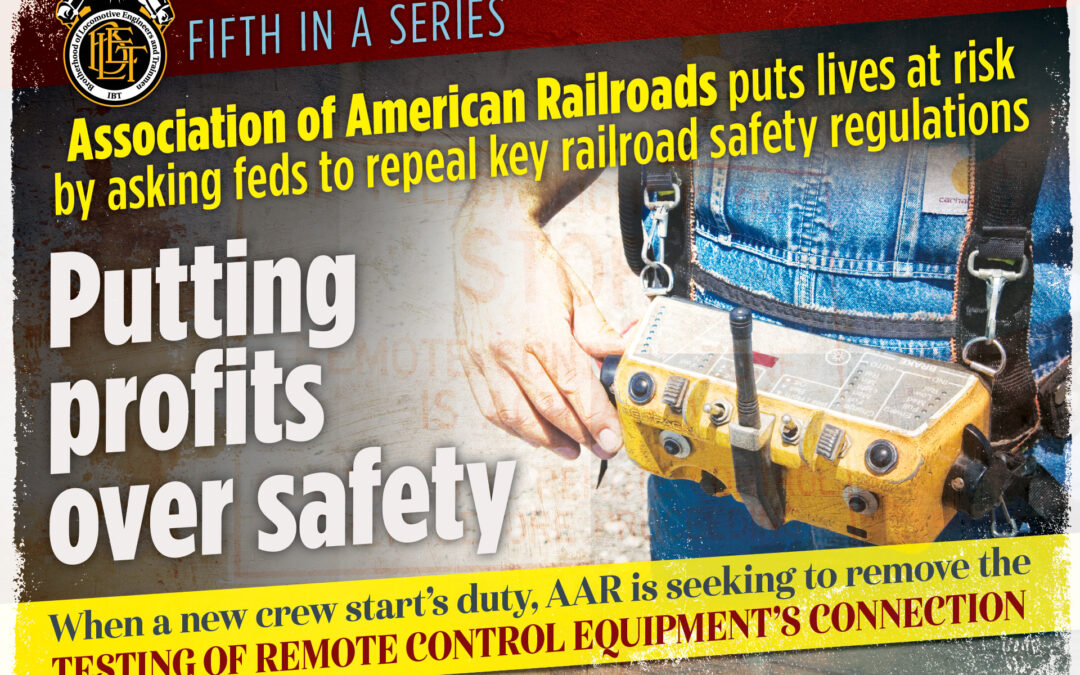Earlier this year, the U.S. Department of Transportation (DOT) asked for feedback on federal safety regulations that could be repealed or modified. Class I railroads through their trade group, the Association of American Railroads (AAR,) jumped at the chance to put profits ahead of workplace and public safety by advocating to remove 80 time-tested safety rules from the books.
This week, we highlight how AAR is attempting to make an already risky operation even more dangerous by weakening safeguards related to remote-control locomotives.
Current best practices and regulations for safe operation of remote-control locomotives can be found in the Code of Federal Regulations. The AAR has asked to eliminate requirements found in §229.15(b) that require the testing of remote control equipment’s connection whenever a new crew starts duty. The regulation also requires that the “pullback” feature be tested to ensure that if a Remote Control Locomotive (RCL) operates over pucks placed on the track to delineate its authorized zone, it will stop. In other words, under the AAR’s proposal, the new crew would have to rely on tests performed by the previous crew, or the crew before that — the AAR does not specify for how many shifts a connection test would be valid. Waiving this regulation would give the carrier the freedom to skip important safety inspections and avoid needed repairs. It also leaves a gaping hole in the regulation regarding the frequency of safety checks. AAR seeks to push the inspection interval as far possible, likely days or weeks on end, maximizing profit at the cost of rail worker and public safety.
With the recent push by Union Pacific and other carriers to operate remote-control locomotives on main line tracks, where they travel through neighborhoods, near schools, and over public highway/rail grade crossings these proposed changes pose a significant safety risk not only for those who work in rail yards but for the communities that surround them.
Click below to read previous articles:
Part 1: Rail industry asks feds to overturn two-person crew rule.
Part 2: Rail industry asks feds to eliminate brake and mechanical inspections at the border with Mexico.
Part 3: Rail industry seeks to game the system by obscuring accident data.
Part 4: Cutting corners on brake operability puts lives at risk.

